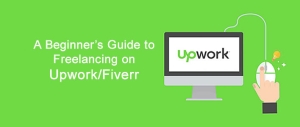
Remote work transformed how people earn a living—removing commute times, opening global opportunities, and enabling flexible schedules. A common myth remains: you need a college degree to access good remote jobs. That’s no longer true. Many remote roles prioritize skills, experience, and results over formal credentials. This article walks you through high?demand remote jobs that generally don't require a degree, explains what companies look for, and gives step?by?step guidance to land these roles and grow a sustainable remote career.
Remote jobs you can get without a degree
Below are commonly available remote roles that employers often fill based on skill and experience rather than formal education. For each role I list what you’ll do, the most important skills, and realistic entry paths.
1. Web Developer (Front?end / Junior Full?stack)
What you do: Build and maintain websites and web apps using HTML, CSS, JavaScript, and frameworks like React or Vue. Key skills: HTML/CSS; JavaScript; Git; basic responsive design; ability to learn frameworks. Entry path: Complete focused projects (landing pages, small web apps), publish them on GitHub, and build a portfolio site. Many hire for junior roles after reviewing a portfolio and technical interview.
2. UX/UI Designer
What you do: Design user interfaces and experiences for websites and apps—wireframes, prototypes, and visual design. Key skills: Figma or Sketch; basic UX research; usability testing; design portfolio. Entry path: Create design case studies (explain problem, your process, and results), volunteer for small projects or redesigns, and showcase work on Dribbble/Behance.
3. Digital Marketer / Social Media Manager
What you do: Create campaigns, run paid ads, manage social channels, track performance, and optimize for conversions. Key skills: Content creation; SEO basics; analytics; ad platform fundamentals (Meta, Google Ads); copywriting. Entry path: Run small ad tests, grow an account (yours or for a small business), obtain certifications (Google Ads, Facebook Blueprint) and present results.
4. Virtual Assistant (VA)
What you do: Administrative tasks remotely—email/calendar management, research, document preparation, and light project coordination. Key skills: Communication; calendar tools; Google Workspace/Microsoft Office; time management. Entry path: Start by supporting entrepreneurs or small businesses on freelancing platforms; gather testimonials and expand niche services.
5. Customer Support Representative
What you do: Handle customer inquiries via chat, email, or phone; troubleshoot issues and document solutions. Key skills: Clear communication; patience; familiarity with support tools (Zendesk, Intercom); problem?solving. Entry path: Demonstrate strong communication, take customer service tests, and start in entry?level remote support roles.
6. Copywriter / Content Writer
What you do: Write articles, web copy, email campaigns, product descriptions, and marketing content. Key skills: Writing clarity; SEO basics; research; niche knowledge (tech, finance, health, etc.). Entry path: Publish samples on a blog or Medium, build a portfolio, and pitch to clients or agencies.
7. Transcription and Captioning
What you do: Convert audio/video to text; create captions and subtitles. Key skills: Fast and accurate typing; attention to detail; familiarity with timestamps and style guides. Entry path: Practice on free transcription tasks, take tests on platforms like Rev or TranscribeMe, and collect positive reviews.
8. Bookkeeper (Entry level)
What you do: Manage invoices, expenses, reconciliations, and basic financial records for small businesses. Key skills: Comfort with numbers; Excel or Google Sheets; accounting software like QuickBooks or Xero. Entry path: Take an introductory bookkeeping course, set up practice books, and offer services to freelancers/small businesses.
9. Video Editor
What you do: Edit footage, add sound, color correction, and assemble final videos for marketing, YouTube, or social media. Key skills: Familiarity with editing software (Premiere Pro, DaVinci Resolve); storytelling; basic motion graphics. Entry path: Edit sample projects, volunteer for indie creators, and build a showreel.
10. QA Tester / QA Analyst
What you do: Test software for bugs, report issues, and verify fixes across web and mobile apps. Key skills: Attention to detail; understanding of test cases; familiarity with bug?tracking tools. Entry path: Learn manual testing fundamentals, practice on open?source projects, and document well?written bug reports in a portfolio.
What employers really look for
Employers hiring for remote roles without a degree evaluate candidates on four main axes:
Skills and demonstrable work — Projects, portfolio, GitHub repos, case studies, or a personal website.
Soft skills for remote work — Clear communication, self?management, and reliability across time zones.
Results and metrics — For marketers, conversion rates or engagement; for developers, performance improvements or bug reductions.
Culture and fit — Can you collaborate asynchronously? Are you proactive? Do you ask the right questions?
Focus your applications on these signals. Don't rely solely on a resume line—show work.
Step?by?step plan to land a remote job without a degree
Below is a practical, repeatable plan you can use regardless of role.
Step 1 — Choose a role and map required skills
Pick one role and list the 6–8 essential skills you must learn. Use job descriptions from real listings as your syllabus.
Step 2 — Learn with focused micro?projects
Use short, project?focused learning. If you’re a developer, build a to?do app; if you’re a designer, redesign a popular app’s landing page with a Figma case study.
Step 3 — Build a proof portfolio
Make every project presentable: problem → process → outcome. Host code on GitHub, designs on a simple portfolio site, and writing samples in a well?formatted document.
Step 4 — Get small, paid gigs
Start on freelance platforms (Upwork, Fiverr, Freelancer) or community boards—take small jobs to get testimonials. Treat each paid gig as a formal case study.
Step 5 — Learn remote tools and process
Familiarize yourself with Slack, Zoom, Trello/Asana, Google Drive, Git, and any role?specific platforms. Employers value people who already know common remote tooling.
Step 6 — Tailor applications and cold outreach
Customize each application. For cold outreach, lead with a short value statement and attach a one?page case study showing how you’d help that company.
Step 7 — Prepare for remote interviews
Practice asynchronous tests, take?home assignments, and live video interviews. Show how you communicate: provide example status updates and how you document work.
Negotiate and plan growth
Once you get an offer, negotiate responsibly—use concrete metrics or comparable salary data if available. Create a 6?12 month growth plan with certifications, higher?impact projects, and leadership steps.
Resume, portfolio, and application tips
Resume: Keep it short. Highlight relevant projects, tools, and measurable achievements. For remote roles, emphasize tools and communication experience.
Portfolio: Make it scannable. For each project: problem statement, your role, tools used, process, and result (ideally with numbers). For writing, include links to published work.
Cover Letters / Pitches: Open with one line that shows you understand the company’s needs. Include one mini case study that proves your ability to deliver.
LinkedIn: Keep your profile updated. Use the About section to describe what you do and the problems you solve. Share short posts about projects and lessons learned to build credibility.
Where to learn and practice (quick resource list)
Free & low?cost learning: freeCodeCamp, Coursera (audit option), edX, Khan Academy, YouTube tutorials.
Short courses & certificates: Udemy, LinkedIn Learning, Google Career Certificates (Digital Marketing, IT Support), HubSpot Academy.
Project practice: GitHub (developers), CodePen, Dribbble, Behance, Medium, and community hackathons.
Freelance platforms: Upwork, Fiverr, PeoplePerHour, and specialised marketplaces (Toptal for experienced freelancers).
Job boards for remote work: We Work Remotely, Remote.co, FlexJobs (paid), AngelList (startups), and company career pages.
Interview and test?task strategies
- Read instructions carefully for take?home tasks; always ask clarifying but concise questions.
- Deliver on time and include a short document explaining decisions and trade?offs.
- In video interviews, prepare a clean setup: quiet room, good mic, and examples ready to share via screen.
- For technical interviews, practice whiteboard/code tests and explain your thought process out loud.
Common myths and reality checks
- Myth: "You must have a degree to be taken seriously." Reality: Many companies value proven ability over credentials, especially for entry and mid?level roles.
- Myth: "Freelancing is unstable." Reality: Freelancing can be predictable with repeat clients and proper pricing—treat it like a business.
- Myth: "Remote work means you work fewer hours." Reality: Remote work can offer flexibility, but success depends on discipline and communication.
Next steps and a 30?day action plan
Day 1–7: Choose a role and collect 5 job descriptions. Identify common skills.
Day 8–21: Complete 2 micro?projects and publish them (portfolio, GitHub, or writing platform).
Day 22–30: Apply to 10 targeted remote roles and send 5 cold outreach messages. Join 2 relevant online communities and request feedback on your projects.
Repeat this cycle, increasing the complexity of projects and the quality of applications.
Conclusion
A degree helps in some fields, but many remote roles reward demonstrable skills, consistent results, and strong communication. By choosing a focused path, building real projects, and learning the remote playbook—tools, processes, and interview habits—you can start and scale a remote career without a college diploma. Take one small project today and treat it like your first paid job; that momentum will compound into more opportunities.







 A Beginner's Guide to Freelancing on Upwork/Fiverr
A Beginner's Guide to Freelancing on Upwork/Fiverr